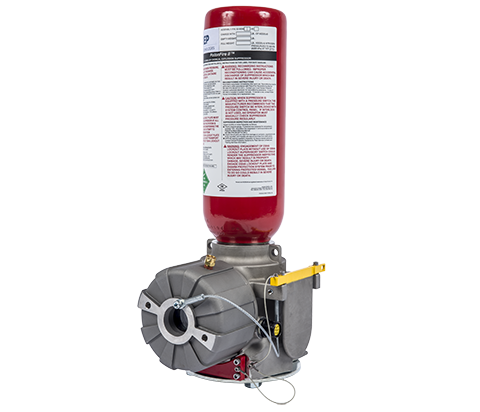
A practical, economical and versatile solution was demanded when IEP Technologies was approached to design an Explosion Protection System for a new spray drying process in a major Food Ingredients Manufacturing Plant based in the US Mid-West.
In this particular case, the process begins with wet slurry being introduced into the spray dryer, which is then dispersed into the heated environment and dried into fine particles. The particles are then discharged and pneumatically conveyed to 4 “Quad” Cyclones where lighter material is separated out while the heavier material is conveyed to a 5th cyclone for further separation. Finally, the material meeting the required specification for the process is transferred to the next stage elsewhere in the plant while the lighter material is returned to the start of the drying process for re-mixing with the incoming material.
The first step for IEP was to conduct testing of the materials to determine the explosibility properties. A third party had previously tested one of the products, but the other 13 were tested at the Combustion Research Center (CRC) in Marlborough, MA, an independent test laboratory specializing in the combustion hazards testing of dusts, liquids, and gases. Once collated, this data was used to exhaustively model different explosion scenarios for the vessels in the ingredients manufacturer’s spray drying process.

The method of explosion protection selected involved installing pressurised cylinders to rapidly discharge explosion suppressant into the protected area in milliseconds upon activation, however the unusual combination of large spray dryer vessel size (> 400 m3), along with its low vessel strength rating meant that a high number of cylinders would normally be needed to mitigate or isolate an explosion. However, after analyzing and modelling the spray dryer operation, IEP’s design team was able to avoid using an excessive number of suppression cylinders by using a recognized methodology where a reduced explosibible volume can be used as the basis of the explosion suppression for spray drying processes of a specific design. The principle observation is that, as the top section of some spray dryers do not contain dry combustible dust, explosion suppression of the entire volume is excessive and unwarranted. This technique allows for a reduced amount of suppressant to be delivered to the upper “wet zone” to maintain its inert state, while explosion protection is concentrated in the lower zone containing dry combustible powder, resulting in a reduction in the number of suppressors needed for overall protection. In North America, NFPA codes allow for this technique based upon performance-based approvals.
Several “Piston Fire II” high-rate suppression and isolation cylinders were specified as part of the explosion protection system, offering the additional benefit of having Class II Division 1 hazardous location approval. These suppressors as well as the SMARTDS dynamic explosion detection system are electrically connected to an EX8000 Control Panel with the capability to selectively activate specific suppressors in the zone where the deflagration is occurring. The overall solution met the stated needs of the customer by providing highly targeted mitigation of explosion events at the same time as reducing the cost of equipment, installation and ongoing maintenance.
By Brant O'Brien
Sr. New Product Engineer


